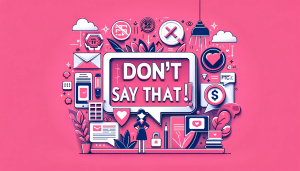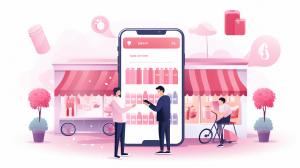What’s the first thing that people do after they see an advert on YouTube or Facebook?
Immediately whip out their card and buy the product? Or more likely go and research the product and company online, going into a rabbit hole of research and discovery.
While many think of content marketing and paid ads as a separate thing, they are best used together.
If you are not doing content marketing and paid ads together, you are losing profits on both strategies.
But when should you start paid ads vs. content marketing and how should you allocate budgets? And how do they work together in synergy?

In this quick guide, we’ll take a look at the pros and cons of each approach and help you decide what’s right for your business, and how you should allocate budgets, and when you should start which.
What Is Content Marketing?
Content marketing is the strategy of creating and distributing valuable, relevant, and consistent content to attract and retain a target audience. Content marketers do this through different types of content such as:
- Blog posts
- Videos
- News articles
- Books
- Infographics
The goal of content marketing strategies?
To provide valuable and informative content for your audience. In doing so, they become more familiar with your brand and are more likely to purchase from you.

Investing in content marketing leads to stronger results over time. When done correctly, content marketing can generate a staggering ROI. It tends to have the highest ROI of all marketing channels, because ultimately after producing the content, it’s free traffic.
The best channel for organic traffic is Google, as its the most plentiful and targeted. Social media traffic is often talked about, but it’s much harder to convert into sales and you need a bigger audience. It’s still worth doing, but brands tend to spend more on Google traffic for a reason.
Ultimately, content marketing helps businesses establish themselves as experts in their industry, improve customer relationships, drive website traffic and leads, and increase sales.
Now let’s look at paid ads – of which the most popular are Facebook Ads, primarily for its ease of use.
What is Facebook Advertising?
Facebook Ads are a type of paid advertisement that appears on Facebook, Instagram, and the Facebook Audience Network.
They are popular because you can target these ads to specific audiences based on demographics, interests, and behaviors. Likewise, you can customize Facebook Ads with images, videos, or calls to action to grab the attention of potential customers.
However, you’re paying for these interactions, usually per click.

You set a budget and pay per interaction that you set, whether that’s per click, per like, or even per landing page view. The platform does provide you with tracking tools and in-depth analytics that help you gauge reach, engagement, and conversions.
Facebook was ranked #1 in social media investment, quality leads, and return on investment in a HubSpot Blog survey conducted in 2021. In Q3 2021, Facebook ads were used by 70 percent of marketers, and 10 million advertisers were active on the platform (source: Social Media Examiner Statista).
Facebook Ads offer powerful targeting capabilities, allowing you to reach specific audiences based on demographics, interests, and behaviors. This level of customization, combined with robust tracking tools and analytics, has made Facebook the top choice for social media investment, quality leads, and ROI in 2021 (source: HubSpot Blog survey and Social Media Examiner).
What is the Difference Between Contenting Marketing and Paid Advertising?
| Aspect | Content Marketing | Paid Advertising |
|---|---|---|
| Definition | Strategic approach focused on creating and distributing valuable, relevant, and consistent content | Paid advertisements to promote a brand through channels like TV commercials or sponsored social media posts |
| Focus | Providing value and building trust with consumers over time | Instant visibility and promotion of a brand |
| Cost | Requires consistent effort over a longer period | Immediate visibility but at a higher cost |
| Results | Takes time to generate results and build an engaged audience | Provides instant visibility and reach, but may not build long-term loyalty |
| ROI | Can generate a significant ROI when done correctly | Can provide a healthy ROI if executed effectively |
| Sustainability | More sustainable and long-term solution | Can be expensive and unsustainable in the long run |
| Audience Engagement | Attracts a steady stream of visitors who engage with the brand | Targets new audiences and aims for conversions |
| Search Engine Rankings | Improves search engine rankings and drives organic traffic | Does not directly impact search engine rankings |
| Brand Building | Establishes the brand as an expert and builds credibility | Provides immediate brand visibility but may not build long-term brand reputation |
| Cost-effectiveness | Cost-effective in the long run and provides a valuable asset | Can be costly and requires ongoing investment |
| Customer Loyalty | Builds customer loyalty over time | Does not necessarily build long-term customer loyalty |
| Recommendation | Recommended for a reliable, long-term marketing strategy | Can be effective for quick traffic and specific sales, but should be used in conjunction with content marketing efforts |
While both forms of marketing involve promoting a product or service, there are key differences between content marketing and paid advertising.
A good content marketer will focus on creating valuable and informative content that is actually useful to the consumer.
Paid advertising doesn’t focus on value as much as content marketing. Instead, paid ads directly promote a brand through paid channels like television commercials or sponsored social media posts.

Additionally, content marketing often takes more time to generate results as it relies on building trust and credibility with the consumer, whereas paid advertising can guarantee immediate visibility for a brand.
Is this immediate traffic worth it? Is it even sustainable?
Sure, it’s helpful if you’re trying to quickly build traffic along with your content marketing effort. It can also be helpful for one small, specific sale, for example.
Overall, however, different tactics require different investments of time and money; for example, content marketing may require consistent effort over a longer period to build up an engaged audience, while paid ads provide instant visibility but at a massive cost.
Paid ads bring fast results, but also carry higher risk, and higher costs, and stop when you stop paying. Content marketing on the other hand is much slower, but generally much more stable over time with a higher ROI in the long run.
Starting Out And Choosing Paid Traffic Is A High Risk Strategy
While it can be tempting to get a lot of traffic quickly, especially if you’re a brand-new business, paid ads can be expensive and unsustainable. For example, to see success with paid ads, you need to invest a substantial amount of money.

Likewise, you’re always fighting against Facebook’s frequent algorithm changes. How do you know whether one ad campaign will perform just as well as the other you ran last month? Who knows; Facebook changes its algorithm so often that it’s anybody’s guess.
Besides, it may be difficult for a company to generate enough sales if it relies heavily on paid ads. Consumer loyalty cannot be earned through paid advertisements.
You also have to fight against ad blockers as more and more users tire of being bombarded with paid ads. Don’t believe us? 74% of people are tired of social ads with 44% of those polled saying the ads they see are irrelevant and uninteresting (source: SurveyMonkey).
Facebook advertising is a high-risk investment if you don’t know what you’re doing. But once it works, you can be printing money – until it stops working again! Anyone running paid ads knows the stress if they have been doing it a long time.
30k/mo Ad Budget Needed for Facebook, YouTube and TikTok
Do you have $20,000 to $30,000 per month you could ‘technically’ set on fire?
If not, you probably shouldn’t be paying for traffic.
There are some exceptions – if you have a very robust system of identifying winning ads, funnels and offers, and you’re in the right niches.
However, for the majority of businesses – it takes a long time and a lot of money to get right.
If you’re going to pay for traffic then you shouldn’t be in a position where you NEED it to turn a profit right away.

It also takes a good deal of cash (about $1k/day) to let the algorithms optimize, you know, Facebook, YouTube, etc.
These platforms are designed for BIG businesses and BIG brands – not the little guy. If you have the budget to make it work, then its definitely worth it, but just understand the risks.
Once you’ve built up a foundation of free organic traffic that’s driving sales, you have a baseline where you can invest your profits in other traffic channels – THAT is when paid ads can help you reach the next level.
Before that though – if you are on a tight budget, focus on free organic traffic, and only allocate money to paid ads if you know how to convert your audience into buyers first, and test slowly and carefully as your budget allows.
Why Organic Content is a Good Starting Strategy
- You minimize the risks of losing money while you optimize your funnel as the traffic is free.
- You can simply write and publish content about your product, which you should know about.
- You learn more about your audience and what they are interested in by doing this, without spending money.
- You build up a stronger brand and trust signals when people research your brand.
- It’s going to send traffic for a long time.
- It gives you important data to train the advertising pixels on who your audience is, and who is similar, making starting ads even easier!
When Paid Ads is a Good Starting Strategy?
Paid ads like Facebook or YouTube ads are good to start with when you have experience in online sales, have an idea what works, and are prepared to lose some money in the short term, to scaler faster in the early days.
But regardless you should quickly add in content marketing and here’s why.
Why Content Marketing is Critical to Run Alongside Paid Ads
Content marketing is critical to run alongside paid ads because if you are not producing content, then you will lose sales to competitors. People who see your ad are going to quickly start doing research, and around 80% of people do research online before buying a product.
It’s estimated 20-40% of ad spend is lost due to a lack of content marketing by the advertiser.
People will see your ad and…
- Check your social media presence
- Google your brand and product names
- Research alternatives and competitors
- Research features and benefits
Most of this research is done through Google, so you need content out there ranking in Google to get in front of people doing this research.
And a little confession… here at AmpiFire we help brands make a lot of money by hijacking competitor’s traffic who are running ads. When the viewers of their ad go do the research we intercept their hard earned audience with answers to their queries and steer them towards our clients. Evil but effective.
It’s estimated that brands can lose 20-40% of their ad spend to competing products who intercept people researching or simply because their online content doesn’t address doubtful viewers skepticism and convince people to buy.
From our own experience it pays well to have a plan to know what your audience is researching whether they saw your ad or not!
How to Allocate Paid Ads Budget vs. Content Marketing Budget
Every business is different but as a general rule when a business is allocating budget for content marketing vs. paid ads, they should do the following:
- On a budget and starting out: Just do content marketing to start with until you generate sales and gain experience.
- Experienced and have investment: Initially 50% in ads while testing heavily to discover what works and 50% in content. As you scale, allocate 10-30% of the budget to content marketing.
- Established & profitable: 10-30% of your ad budget should go to content marketing, and the rest to paid ads. If you are able to scale your paid ads, also invest more in content because in the long run it has a better ROI, and also improves the sales from ads as people do research.
Content Marketing Is More Sustainable
If you’re looking to create a more engaged, loyal audience then we suggest investing in content marketing.
Sure, it takes slightly more time to see results, but those results last long and provide you with a more long-term, cost-effective solution. How so?
According to a HubSpot study, more than half of marketers surveyed (53%) say content marketing increased their company’s revenue.

In addition, content marketing improves your search engine rankings, leading to organic traffic even when you’re not actively promoting yourself on social media. And because content exists indefinitely, it continues to drive traffic and conversions for years after its initial creation.
Over 96 percent of top content marketers claim to have built credibility and trust with their audience.
So if you’re looking for a reliable form of marketing that will stand the test of time, content marketing is the way to go.
Get Help With Your Content Marketing Strategy
So, you’re building out a marketing strategy. Should you invest more in content marketing or paid ads such as Facebook Ads?
Honestly, if you start out investing in Facebook Ads then you’re gonna find yourself left behind and broke eventually. Choose content marketing instead. It’s sustainable, cost-effective, and ensures you’re building a brand the right way.
While content marketing is a powerful strategy for brands, it can also be challenging and time-consuming. Because of this, many companies decide to outsource their content marketing to a professional.
Don’t know where to start? Get in touch with our team and expert advice on the right strategy for your brand!
Author
-
CEO and Co-Founder at AmpiFire. Book a call with the team by clicking the link below.
Related Posts

Ecommerce Scaling Secrets: Features, Benefits & Pricing – Facebook & Paid Ads Course Explored
Master Facebook ads with Alex Fedotoff's proven marketing strategies and scaling secrets for eCommerce success

Don’t Say That! By Greg Christiansen & Anik Singal Summary: FTC Rules For Marketing & Advertising Content
Don’t Say That! by Greg Christiansen & Anik Singal offers a blueprint on how to stay FTC compliant for marketers…

Forbes, TechCrunch & Wired Article Coverage | Cost to Submit & Is it Worth It?
Find out why AmpiFire skips submitting to TechCrunch & Wired, opting for strategies that boost business ROI and drive long-term…

The Wholesale Formula Features & Prices: Is This Amazon FBA Training Worth It?
Learn how The Wholesale Formula can contribute to the success of your Amazon FBA business in this detailed review and…

BigCommerce vs WooCommerce | eCom Platforms Pricing & Features Comparison
Dive into this comparison guide to learn the key features, integrations, and pricing between the two platforms BigCommerce and WooCommerce.

BigCommerce vs Shopify | eCom Platforms Pricing & Features Comparison
Learn the differences between BigCommerce vs. Shopify features and understand which E-commerce platform offers better value for your money.










